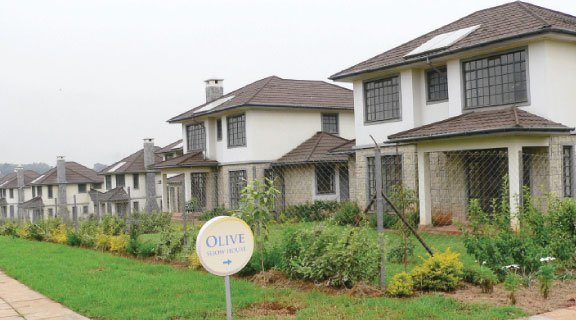The potential value of the Kenyan mortgage market stands at more than Sh800 billion, yet mortgage providers have been able to tap into only Sh164 billion of this amount, a Central Bank of Kenya report says.
There are approximately 25,000 mortgages, but the situation is changing, with more people going to banks to apply for mortgages, Mr George Laboso, the head of mortgages at Barclays Bank says.
He adds that there is a huge opportunity for growth in this sector, especially in the low- and medium-income group market, which remains untapped.
Mr Laboso says that the slow uptake it attributable to certain beliefs and perceptions, which have seen many Kenyans shy away from mortgage financing.
However, he notes, while some of these perceptions might be true to a certain extent, most are baseless, while some of the conditions that make people shy away from mortgage financing have been adjusted to suit potential clients, says Mr Laboso.
“It is true that mortgage uptake is a function of the economy, so if the economy is doing well, more people will borrow, and the reverse is also true,” says Mr Laboso.
There are also a number of factors that affect the lending rates for mortgages, including the cost of funds, operational costs, risk and profit margins, inflation, and the fluctuation of the shilling. But the greatest challenge to mortgage lenders is using short-term liabilities to finance long-term assets.
“There is a need for lenders to look for long-term funds to finance the mortgage business as well as develop a secondary market where mortgage-backed securities can be traded,” Mr Laboso notes.
NOT MORE EXPENSIVE THAN CONSTRUCTION LOANS
With regard to cost, he says it is not true that mortgage financing is more expensive than construction loans since pricing is the same for both.
The difference is that in the case of construction loans, the potential homeowner is more likely to save 20-30 per cent of the cost, but this also depends on their project management skills, says Mr Laboso.
He says it is preferable to take a mortgage as it allows you to benefit from capital appreciation on the property, and the peace of mind that comes with owning a professionally constructed home,”
The other wrong perception has to do with the repayment period for mortgages. Many believe that mortgages are of necessity long-term loans, whose repayment cannot be fast tracked.
5 reasons why Juja town is the hottest selling real estate location today
“The truth is that mortgages are like any other loan, so one can speed up the repayment to clear them faster. In fact, most customers pay off their mortgages by the seventh year,” says Mr Laboso.
The perception that mortgages target the rich and those in regular employment is also incorrect because mortgages can be taken by anybody with a regular income, whether in the formal or informal sector, Mr Laboso says, adding that lenders have packages to suit different people.
He says people should not shy away from taking mortgages today as there are affordable properties and cost-effective building technologies on the market. One can get a house built using the available low cost technologies, which significantly reduce the cost of financing, says Mr Laboso.
“In recent times we have seen a growing trend where employers have taken a lead in encouraging their employees to take up mortgages as an incentive and retention strategy. The government, for instance, is leading from the front by offering mortgages to civil servants at three per cent interest,” says Mr Laboso. Banks are also willing to negotiate a special mortgage scheme with an employer at affordable rates.
There are also incentives such as the mortgage interest tax relief that one benefits from when they have taken a mortgage.








